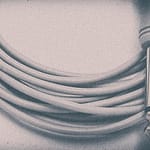Why use a thermometer? Body temperatures can plummet during anesthesia, and this can have major consequences, such as decreased metabolism (causing longer recovery periods), reduced anesthesia requirement (causing an overdose with potentially harmful side effects), bradycardia (causing decreased perfusion), and an increase of the numbers of postoperative complications. Hyperthermia is also a risk, especially for septic … [Continue Reading]
What data is provided by monitoring devices? What are those devices used for?
By Dr. Truchetti Geoffrey, DMV, MSc, DES, DACVAA
Introduction
During anaesthesia, all anaesthetic agents have adverse effects that can be harmful to the patient. The way we measure anaesthetic outcome should shift from the lack of anaesthetic mortality toward decreased anaesthetic morbidity. The most common complications during anaesthesia are hypoxemia, hypercapnia, hypotension and hypothermia. The American College of Veterinary Anaesthesia and Analgesia (ACVAA) published the small animal monitoring guidelines (www.acvaa.org). Pulse oxymetry, capnography, ECG, blood pressure monitoring and temperature are all on the list of recommended devices. Additionally, especially in the absence of someone dedicated to the monitoring of the patient, an audible signal for respiratory rate and heart rate should be available.
However, monitoring a patient under anaesthesia does not mean only using advanced monitoring devices. Someone trained should watch the patient and keep tract of the data, ideally continuously.
The aim of the following posts is to summarize how the most common monitoring devices work, what information they give, and how and when to use them.
Non-Invasive Blood Pressure (Oscillometric devices)
Why use it? One of the objectives of anesthesia is to provide adequate blood flow to tissue. One way to assess blood flow is to measure blood pressure (ideally mean blood pressure) and heart rate. Most of the time, in small animal anesthesia, blood pressure is measured non-invasively. It is, however, possible to measure blood … [Continue Reading]
Non-Invasive Blood Pressure (Doppler)
Why use a Doppler? One of the objectives of anesthesia is to provide adequate blood flow to tissue. One way to assess blood flow is to measure blood pressure (ideally mean blood pressure) and heart rate. Most of the time, in small animal anesthesia, blood pressure is measured non-invasively. It is, however, possible to measure … [Continue Reading]
Electrocardiogram (ECG)
Why use an ECG? Electrical activity of cardiac cells is responsible for the initiation of every heartbeat. Electrical activity is essential for the heart but is not correlated with the efficiency of each beat. The electrical activity can be normal, but the beat grossly inefficient. Any disturbances of the electrical activity may affect the efficiency of … [Continue Reading]
Capnography
Why use a capnograph? Carbon dioxide (CO2) is a metabolic by-product of cells. It is transported by the blood to the lungs, where it is eliminated. Therefore, measuring expired CO2 assesses metabolism, the cardiovascular system, and respiratory system. Additionally, as the anesthesia circuit role is to prevent the rebreathing of CO2, measuring inspired CO2 also … [Continue Reading]
Why and When use a Pulse Oximeter
Why use a pulse oximeter? Oxygen (O2) is transported from the lungs to the cells by the blood. O2 is either fixed to hemoglobin or free in the blood. However, the amount of free O2 in the blood is minimal compared to O2 fixed to hemoglobin, and free O2 does not participate significantly to the … [Continue Reading]
Conclusion
Monitoring devices only provide an indication of how vital functions of the patients are affected by anaesthesia. During anaesthesia, the focus is put on cardiovascular parameters. The use of those devices allows monitoring of the common anaesthetic complications. However, it is important not to forget to observe the patient. Clinical signs are the only tool to monitor anaesthesia depth.
It is also important to record those data for future references and improve the quality of monitoring. An anaesthetic record should be mandatory according to the ACVAA guidelines. Anaesthetic monitoring should begin as soon as the sedation is administered, and should be continued until complete recovery.





